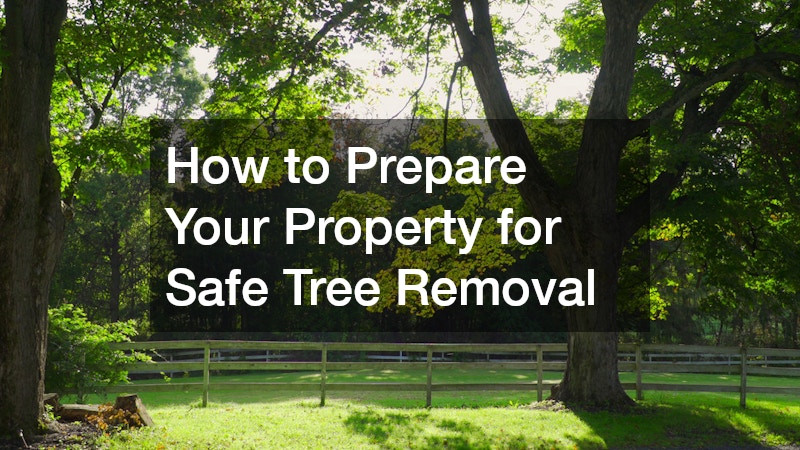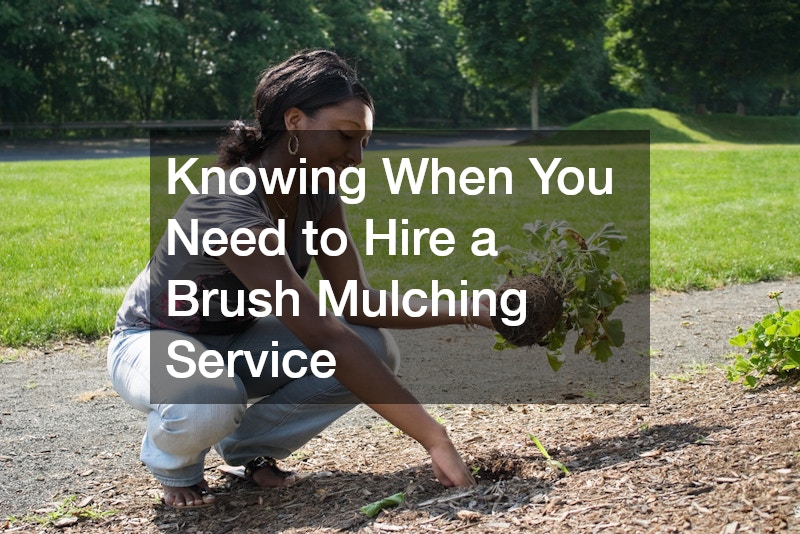Tree removal is sometimes unavoidable. Whether you’re dealing with a dead or diseased tree, one leaning dangerously close to your home, or clearing space for new landscaping, removing a tree is a major task that requires planning and attention to safety. Proper preparation not only helps protect your property but also ensures that the process goes smoothly and efficiently for everyone involved.
Below, we’ll walk through the key steps you should take to prepare your property for safe tree removal—from the first assessment to the final cleanup.
Assess the Tree and Its Surroundings
Before any removal takes place, it’s essential to take a close look at the tree itself and the area around it. Identify the reason for removal: is the tree diseased, dead, or creating a safety hazard? If you’re unsure, you may want to have a certified arborist inspect it. Arborists can determine whether the tree can be saved through pruning or treatment, or if removal is truly the safest option.
Next, consider the surroundings. Note the tree’s proximity to your house, garage, fences, sheds, utility lines, and neighboring properties. The layout will influence how the removal is carried out—especially for large trees that may need to be dismantled in sections rather than felled all at once.
If the tree is near power lines, contact your local utility company before doing anything. Never attempt to remove a tree that’s entangled with electrical lines on your own.
Check for Local Permits or Regulations
Tree removal often falls under local regulations or homeowner association (HOA) guidelines. Many cities and counties require a tree removal permit, particularly for large or protected species. Removing a tree without permission can lead to fines or penalties, even if it’s on your own property.
Do a quick check with your local public works or environmental department. They can tell you whether you need a permit and if there are specific requirements—such as replacing the tree or following approved removal methods. If you live in a neighborhood with an HOA, review the community bylaws as well.
Choose a Qualified Tree Removal Professional
Tree removal is hazardous work. Professional crews have the proper equipment, training, and insurance to perform the job safely. When hiring a contractor, look for these qualifications:
- Certification: Seek out companies with ISA-certified arborists or similar credentials.
- Insurance: Always verify that the company carries both liability insurance and workers’ compensation coverage.
- References: Ask for past client reviews or photos of completed jobs.
- Estimate: Obtain a written estimate detailing the scope of work, cleanup responsibilities, and total cost.
Avoid door-to-door contractors or anyone who asks for full payment up front. A reputable company will gladly explain its process, safety measures, and timeline before starting work.
Clear the Work Area
Once you’ve scheduled the tree removal, the next step is to clear the area. Workers need unobstructed access to the tree and enough room to maneuver heavy equipment such as chainsaws, cranes, or wood chippers.
Here’s what to do beforehand:
- Move vehicles out of the driveway or street near the work zone.
- Relocate outdoor furniture, potted plants, or garden decorations that could be damaged.
- Protect delicate landscaping by covering smaller plants or flowerbeds with tarps or plywood sheets.
- Secure pets and children indoors during the removal process. Loud noises, falling debris, and machinery can be stressful or dangerous for them.
By creating a clean workspace, you help the crew complete the job more efficiently and safely.
Plan for Equipment Access
Many tree removal projects require specialized equipment—such as bucket trucks, cranes, or stump grinders. These machines need space to operate, so it’s important to plan how the team will access your property.
If you have a fenced yard, ask whether a section of the fence needs to be temporarily removed. If there are narrow gates, steep slopes, or delicate garden areas, discuss these challenges with the contractor in advance. Providing clear entry points and access routes reduces the risk of damage to lawns and driveways.
Preparing your property for safe tree removal involves more than just calling a contractor. It’s about thoughtful planning—assessing risks, obtaining necessary permits, clearing the workspace, and ensuring everyone’s safety from start to finish. By following these steps, you can make the process efficient, safe, and respectful of your property and surroundings.
Tree removal is a big project, but with careful preparation, you’ll protect your home, your landscape, and the people who help you take care of it.





